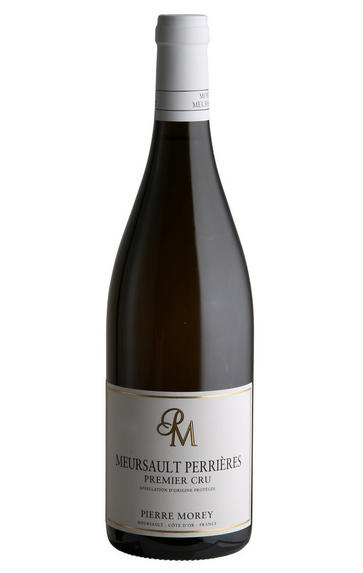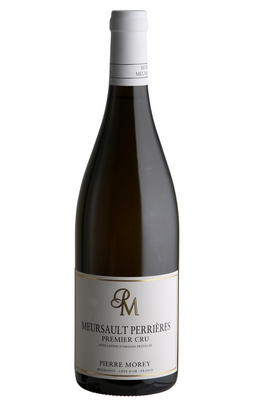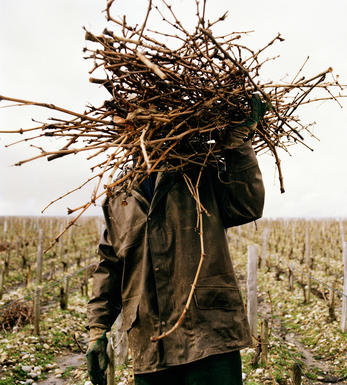
2008 Meursault 1er Cru, Les Perrieres, Pierre Morey

Critics reviews
Allen Meadows - burghound.com - Jun 2010
About this WINE

Domaine Pierre Morey
Domaine Pierre Morey is, unsurprisingly, the own domaine of acclaimed winemaker for Domaine Leflaive, Pierre Morey. While he is more famous for this latter role, Pierre owns 11 hectares of his own vines in his domaine, which was founded in 1971, two-thirds of which are white. He has several holdings in Meursault, Pommard and Puligny-Montrachet, as well as a few Grand Cru plots.
The Meursault branch of the Morey family, originally from Chassagne, dates back to 1793 when Alexis Morey, visiting Meursault at dead of night with a clandestine priest (this was during the ‘terror’ years of the Revolution) fell in love with a Mademoiselle Millot and married her. A multitude of inheritances (Alexis had 31 grandchildren) and difficult economic circumstances at various times meant that Pierre Morey’s father Auguste had only a few simple vineyards of his own, though he supplemented his supply with sharecropping contracts, most notably with the Domaine des Comtes Lafon. Pierre took these over in the early 1970s but in 1984 the Lafon family announced their intention to take back their vineyards as the agreements expired over the next few years, since Dominique Lafon was planning to work full time at the domaine.
Fortunately Pierre was shortly afterwards hired as general manager of Domaine Leflaive (from 1988 until retirement in summer 2008), while he also set up his negociant business, Morey Blanc, to replace the loss of the Lafon vineyards. He has also been able to purchase a few plots of vines himself. He has now been joined in both domaine and the negociant business by his daughter Anne.
The vineyards have been farmed organically since 1993 and biodynamically since 1998. The white grapes are crushed before pressing, with very little clarification of the juice, while Pierre likes regular lees stirring until Christmas – rarely thereafter except in years with higher acidity and late malolactic fermentation such as 1993 and 2007. Typically the wines are raised in one third each new wood, one year old and two year old, before racking into older barrels before the next vintage, and bottling the following spring.
Jasper Morris MW, Burgundy Wine Director and author of the award-winning Inside Burgundy comprehensive handbook.

Meursault
There are more top producers in Meursault than in any other commune of the Côte d’Or. Certainly it is the most famous and popular of the great white appellations. Its wines are typically rich and savoury with nutty, honeyed hints and buttery, vanilla spice from the oak.
Even though it is considerably larger than its southerly neighbours Chassagne and Puligny, Meursault contains no Grands Crus. Its three best Premiers Crus, however – Les Perrières, Les Genevrières and Les Charmes – produce some of the region’s greatest whites: they are full, round and powerful, and age very well. Les Perrières in particular can produce wines of Grand Cru quality, a fact that is often reflected in its price. Meursault has also been one of the driving forces of biodynamic viticulture in the region, as pioneered by Lafon and Leflaive.Many of the vineyards below Premier Cru, known as ‘village’ wines, are also well worth looking at. The growers vinify their different vineyard holdings separately, which rarely happens in Puligny or Chassagne. Such wines can be labelled with the ‘lieu-dit’ vineyard alongside (although in smaller type to) the Meursault name.
Premier Cru Meursault should be enjoyed from five to 15 years of age, although top examples can last even longer. Village wines, meanwhile, are normally at their best from three to 10 years.
Very occasionally, red Meursault is produced with some fine, firm results. The best red Pinot Noir terroir, Les Santenots, is afforded the courtesy title of Volnay Santenots, even though it is actually in Meursault.
- 305 hectares of village Meursault. The best vineyards include Clos de la Barre, Tesson, Chevalières, Rougeot, Narvaux
- 132 hectares of Premier Cru vineyards (17 in all). The finest vineyards include Les Perrières, Les Genevrières and Les Charmes
- Recommended producers: Comte Lafon, Arnaud Ente, Coche Dury, Guy Roulot, Jean-Philippe Fichet, Patrick Javillier, François Jobard, Michel Bouzereau
- Recommended restaurant: Le Chevreuil

Chardonnay
Chardonnay is often seen as the king of white wine grapes and one of the most widely planted in the world It is suited to a wide variety of soils, though it excels in soils with a high limestone content as found in Champagne, Chablis, and the Côte D`Or.
Burgundy is Chardonnay's spiritual home and the best White Burgundies are dry, rich, honeyed wines with marvellous poise, elegance and balance. They are unquestionably the finest dry white wines in the world. Chardonnay plays a crucial role in the Champagne blend, providing structure and finesse, and is the sole grape in Blanc de Blancs.
It is quantitatively important in California and Australia, is widely planted in Chile and South Africa, and is the second most widely planted grape in New Zealand. In warm climates Chardonnay has a tendency to develop very high sugar levels during the final stages of ripening and this can occur at the expense of acidity. Late picking is a common problem and can result in blowsy and flabby wines that lack structure and definition.
Recently in the New World, we have seen a move towards more elegant, better- balanced and less oak-driven Chardonnays, and this is to be welcomed.


Buying options
Add to wishlist
Description
Here the nose offers yet another step up in refinement with an almost delicate nose of acacia blossom, citrus and wet stone that leads to linear and precise flavors of crystalline purity, all wrapped in a long, dry, serious and explosive finish that displays a penetrating minerality. A classic Perrières.
Allen Meadows - burghound.com - Jun 2010
wine at a glance
Delivery and quality guarantee